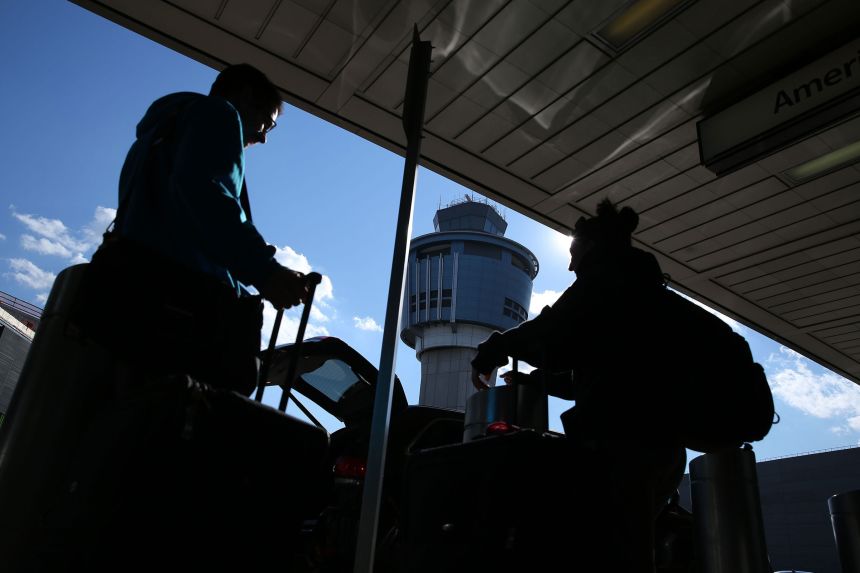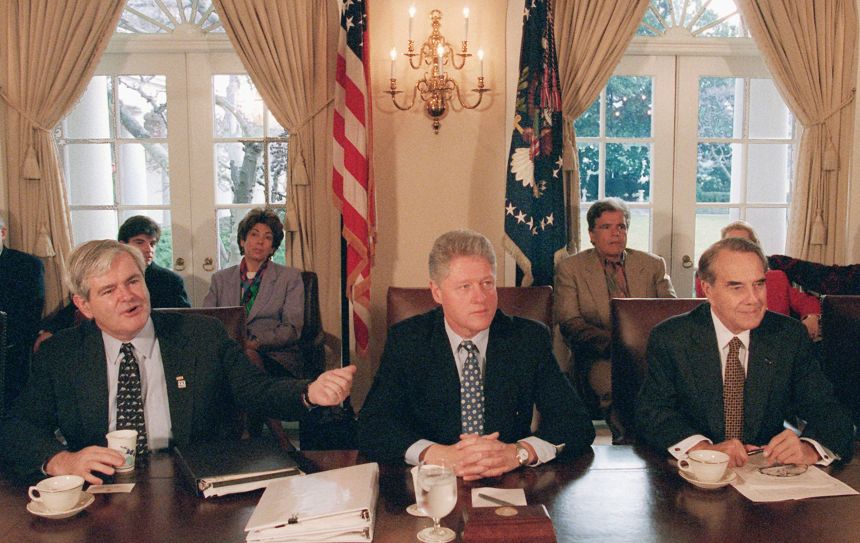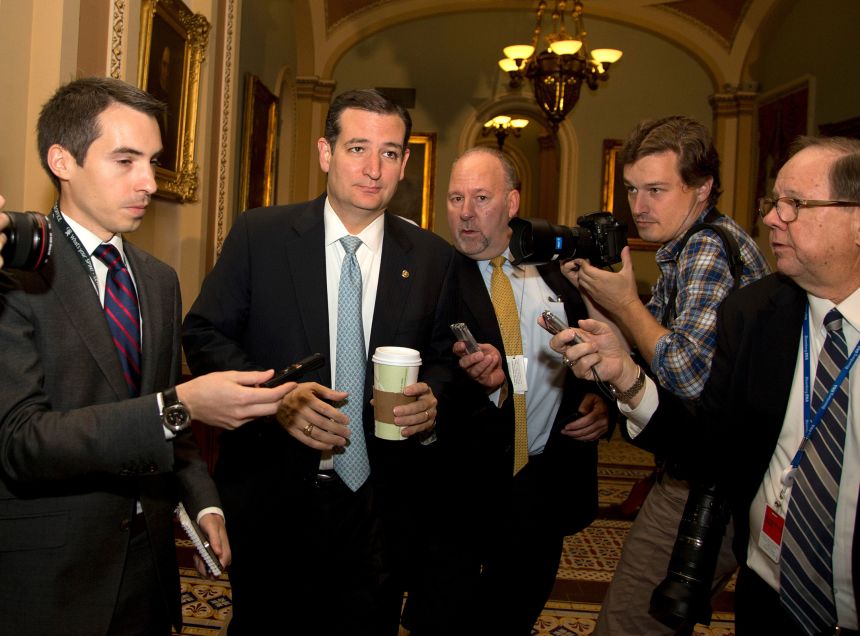A version of this story appeared in CNN’s What Matters newsletter. To get it in your inbox, sign up for free here.
Government “shutdown” is something of a misnomer because when funding lapses, much of the government does not shut down.
Lawmakers failed to pass spending bills on time, but Social Security checks and Medicare payments will continue since those appropriations are not covered by the annual funding process. Veterans’ health care will continue. Border Patrol will continue their efforts and so will the National Weather Service. Most of the military and national security apparatus will continue to show up for work.
There will be hiccups in daily life for Americans and real headaches for the federal workers who are furloughed or who work without pay during the funding lapse, although the government has generally made those people whole when the shutdown ends. The Trump administration has also threatened to fire, rather than furlough, many federal workers. The government will be less efficient not running as intended even if much of it remains technically open.
The last shutdown overseen by Trump — the longest in US history — ended in January 2019 after ten air traffic controllers didn’t show up for work, temporarily shutting down La Guardia airport in New York, as CNN reported at the time.

The entire concept of a funding lapse, aka shutdown, is relatively recent. It only exists because President Jimmy Carter’s attorney general, Benjamin Civiletti, wrote a legal memo in 1980. Before that, government agencies frequently carried on with business even when lawmakers failed to pass appropriations bills on time. That’s it. A government lawyer essentially created the idea of shutdowns.
It’s not supposed to work this way. The appropriations process is supposed to be completed by the end of September each year, before the government’s fiscal year starts in October. There are 12 separate appropriations bills that are supposed to be passed. Zero were passed through both chambers this year and the full slate of appropriations bills haven’t been passed by the September 30 deadline since the 1997 fiscal year.
Instead, Congress has fallen into a cycle of lurching between temporary funding bills. The one Republicans and Democrats are fighting over right now would only keep the government funded through November.
What is this fight about? Democrats see this as an opportunity to exert their only real leverage in government. They’re insisting that Republicans reinstate expiring Obamacare subsidies so that health insurance premiums don’t skyrocket by 75% for the approximately 24 million people on Obamacare exchanges through the Affordable Care Act. Republicans want to have that debate later this year.
How will this end? Someone will blink. It could be a long shutdown or a short shutdown, but it will end with someone blinking. This current lapse is somewhat similar to the first and shorter of two funding lapses during Trump’s first term. In that instance, in January of 2018, Democrats were pushing for permanent help for the children of undocumented immigrants, so-called Dreamers, who were given temporary status by President Barack Obama only to see Trump sunset the program, Deferred Action for Childhood Arrivals. Within a few days Democrats relented and voted for a short-term government funding bill for three weeks in exchange for assurances that they would have an opportunity to debate and solve the DACA issue. But it never got solved.
Presidents and lawmakers fear shutdowns. In addition to the headaches they cause, politicians can pay a political price for failing to do their primary job, which is making government function. An expert on congressional operations at the Government Affairs Institute, Matt Glassman, notes it is frequently the party “trying to leverage the shutdown,” that shoulders more of the blame. In this case that might be Democrats. If there is a price, Democrats could pay it in the 2026 midterm election, when they desperately want to gain control of the House of Representatives.
Three shutdowns to remember. There have been three long-term funding lapses that lasted more than a few days. Here’s a look at those three and who blinked to end them. And note, a version of this was published back in 2019:

The Clinton and Gingrich shutdowns – November 1995 and December 1995 to January 1996
Length: 6 days and then 22 days
Who blinked? Bill Clinton, and then congressional Republicans
These two shutdowns combined for 28 days. They’re now viewed as largely helping to revive Clinton’s presidency even though he did agree, with stipulations, to Republican demands that the budget be balanced within seven years.
Clinton made that concession to end the first shutdown. Republicans blinked on their demands for how it should be implemented with the second.
On the day that three-week shutdown ended — January 6, 1996 — The New York Times used the language of retreat to refer to Republicans, comparing the party to Napoleon overreaching in his attempts to take Moscow.
“But by the end, the shutdown had boomeranged into a powerful force against Republicans, who were seen as wreaking havoc on Federal workers and innocent citizens to score political points,” Michael Wines wrote on the front page of the Times. “And Mr. Clinton’s stubborn refusal to cut a deal, seen all last year as evidence of political weakness, suddenly began to look like courage in the face of an enemy siege.”

Length: 16 days
Who blinked? Congressional Republicans
Conservative Republicans like Sen. Ted Cruz of Texas and Rep. Mark Meadows of North Carolina helped lead an insurrection among Republicans in the House, who insisted on an effort to strip funding for the Affordable Care Act. But with Obama still in office and Democrats then in control of the Senate, the effort had no chance of success. There were other issues at play, but ultimately Republicans agreed to fund the government at existing levels with a slight tweak to income verification for health care subsidies.
Then-House Speaker John Boehner admitted in a radio interview that Republicans had thrown in the towel.
“We fought the good fight. We just didn’t win,” he said at the time.

Length: 35 days
Who blinked? Trump
The longest-ever government shutdown occurred during Trump’s first term. It started after the 2018 election, in the lame duck period after Republicans had lost control of the House, but before Democrats had officially taken control. Trump wanted money to fund his border wall and threatened not to sign any spending bill that didn’t include it. Not even with a House and Senate majority could he get the funding back then. Democrats, when they took control of the House, insisted that debate over the border wall be separated from the larger funding bill. Trump ultimately relented, but only after causing the longest shutdown in history, which started, like now, when his Republicans held unified control of the federal government.







